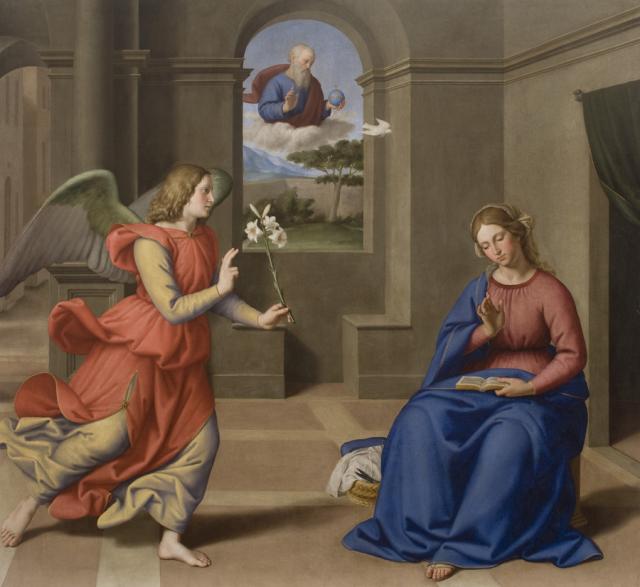Annunciation
San Pietro Museum Complex

Giovan Battista Salvi, known as Sassoferrato
oil on canvas
1740s
This painting by Giovan Battista Salvi, known as Sassoferrato is part of a series of copies that could perhaps best be described as intelligent re-proposals with variations on the theme by this painter from the Marches, created with the work of Raphael and Perugino in mind. In this work the artist was inspired by the Annunciazione feature in the left compartment of Raffaello’s Pala Oddi which was originally housed in the San Francesco church in Perugia, before being plundered by the French in 1797, recovered by Antonio Canova in 1815 and then immediately placed in the Vatican Pinacoteca.
The Annunciazione was painted in around 1639 at around the same time as Salvi began his copy of Raffaello’s Trasporto del Cristo morto, another beautiful work he produced for the San Pietro monks. It was identified by Agostino Tofanelli as one of the works to be requisitioned for the Capitolini museum (1812) although fortunately, being housed in a consecrated church where services were still being held, it finally remained in the city of Perugia. Along with l’Annunciazione two other pieces by Salvi were slated to be requisitioned, il Trasporto del Cristo morto (The laying of Jesus in the tomb) and la Giuditta con la testa di Oloferne (Judith with the Head of Holofernes), which can be included among the greatest classicistic works of the 17th century. Sassoferrato’s paintings for San Pietro, including the Immacolata concezione, (Immaculate conception) now part of the Louvre Museum collection, were to have been part of an iconographically similar and consistent series, the purpose of which was the exaltation of the figure of the Blessed Virgin.